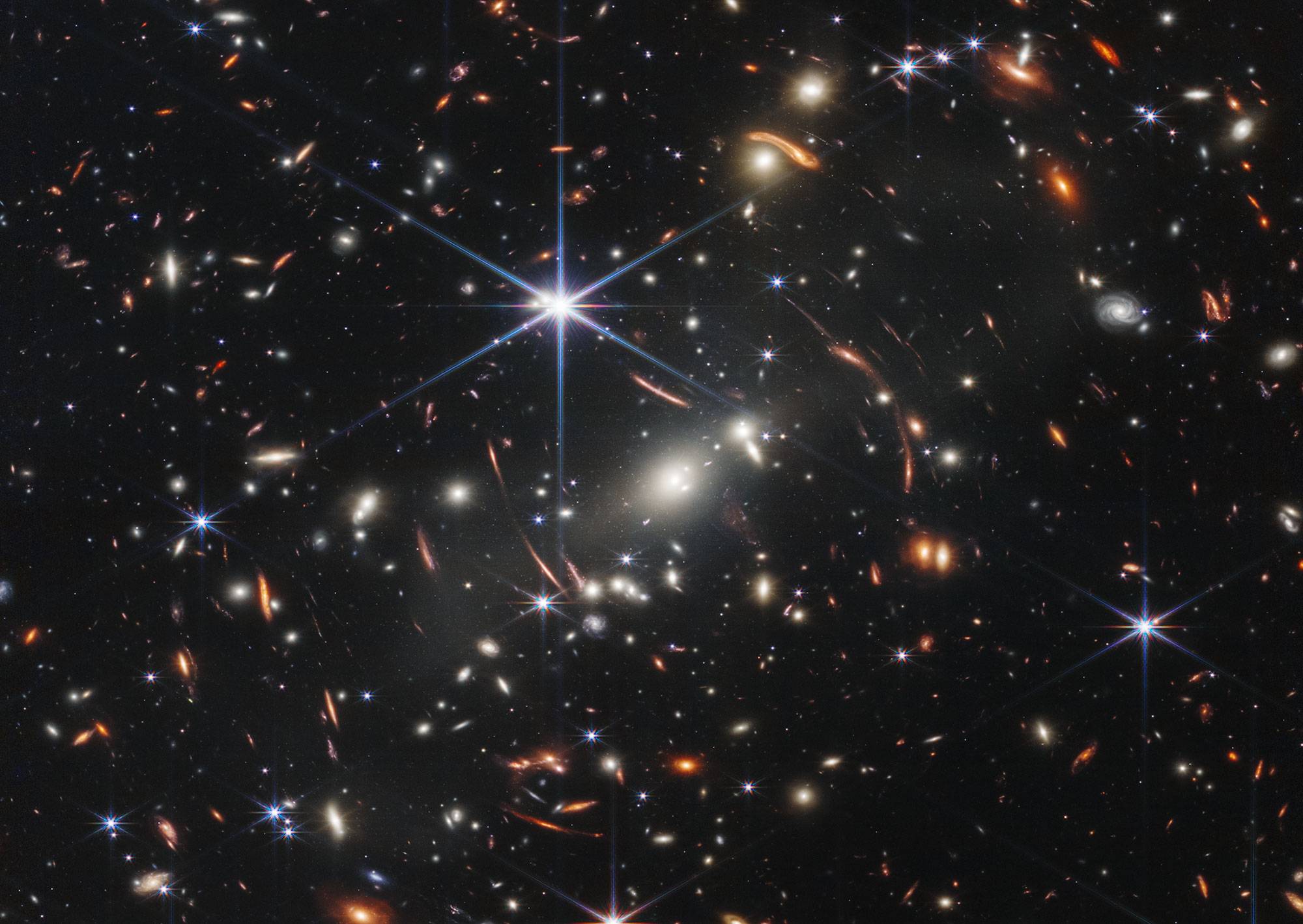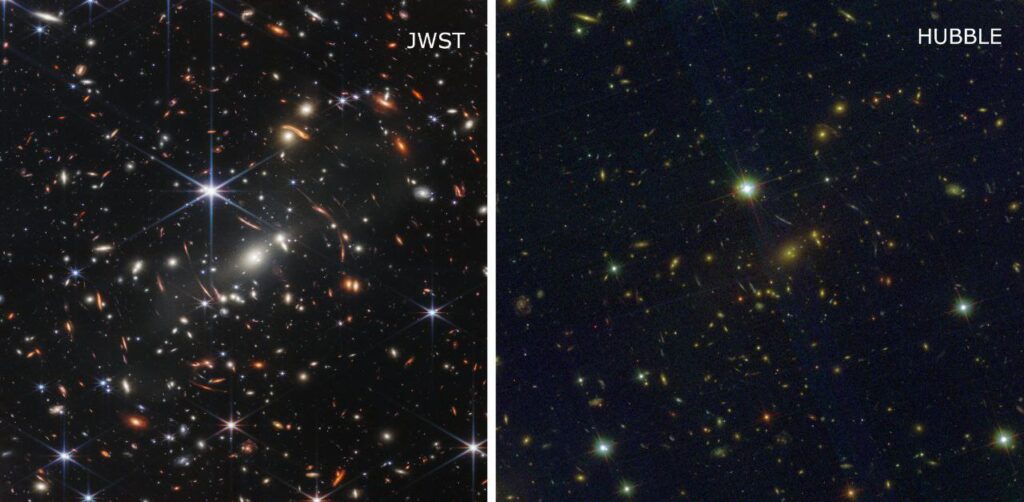
As planned, the James Webb Telescope team has demonstrated the first full color images obtained with this new space observatory. The telescope made the deepest and most accurate infrared image of the distant universe to date. This is a detailed image of the galaxy cluster SMACS 0723 (in the cap to this article).
The James Webb Telescope has brought thousands of galaxies into view for the first time, including the faintest objects ever seen in the infrared. This fragment of the vast universe can be compared to a grain of sand that someone holds at arm’s length.
The image contains a deep field captured by the NIRCam (Near-Infrared Camera). It is a composition created from different images that are taken at different wavelengths, with a total duration of 12.5 hours. This made it possible to reach a depth in the infrared range unreachable by the Hubble Space Telescope.
The image shows the galaxy cluster SMACS 0723 as it was 4.6 billion years ago. The combined mass of this galaxy cluster acts as a gravitational lens, magnifying the much more distant galaxies behind it. The NIRCam was able to bring these distant galaxies into sharp focus. They have tiny, faint structures that have never been seen before, including star clusters and diffuse detail. The data obtained from the James Webb Telescope allows researchers to learn more about the masses, ages, history, and composition of galaxies. This is because the space observatory’s instruments allow finding and documenting early galaxies in the universe.
Full-size versions of the image in various formats are available on the project website. A gallery of the first images from the James Webb Telescope should also be available soon.
Comparison of Hubble and Webb images:


